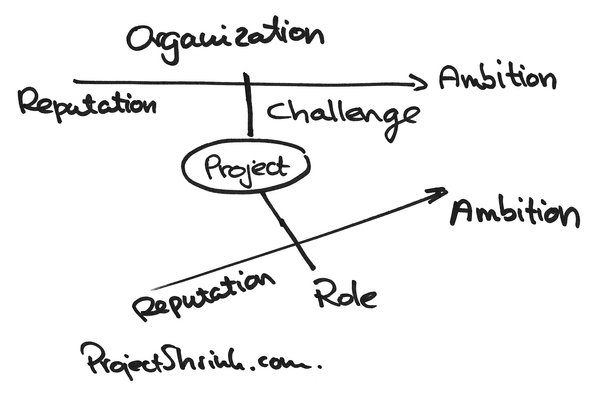Why is your project taking place right now? And not last year, or next year? Are there also any other projects taking place now? Why? What is the challenge? This can be either a threat or opportunity that is the cause / reason for the project. What is the legacy the organization wants to leave behind?
These questions matter. A lot.
Being busy in a project can be overwhelming. Before you know it you are only focused on this Big Adventure. Of course, your project is worth your time and attention. And of course, it is an incredible story, this temporary awesomeness that you and your mates are doing right now.
But it is just exactly that. A temporary story. When you’re done, you’re done.

Your project is part of a larger context. Longer journeys. Larger stories. And these stories shape your project more than you know. It’s like Star Wars. You can watch just episode IV. And enjoy it. But it starts really making sense when you watch the entire series.
Your project is an episode in two stories.
The story of you. The individuals that are involved in the project. An individual has an ambition and a reputation. And he has a role in your Big Adventure.
And the story of the organization.
You can address the Story of You with the Map Of You.
The same principles can be applied to the Organizational Journey.

By exploring the relationship of the project and The Organizational Journey, you and your team create awareness around why you doing things. Awareness beyond the normal “build this” specification. A sense of why you are doing what you are doing. This will help the team to make decisions that fulfill the organizations desires and be more in tune with its context.
Draw an empty map which basically looks like a bow tie. Put “NOW” in the center and “PAST” and “FUTURE” on both sides. Ask the participants to write keywords that answer questions as formulated in the first paragraph of this post.
Other Maps.
The Organizational Journey is part of a change/project management strategy focused on culture and using an “adventure travel” metaphor. For more maps and exercise, visit my list of Shrinkonian exercises.
